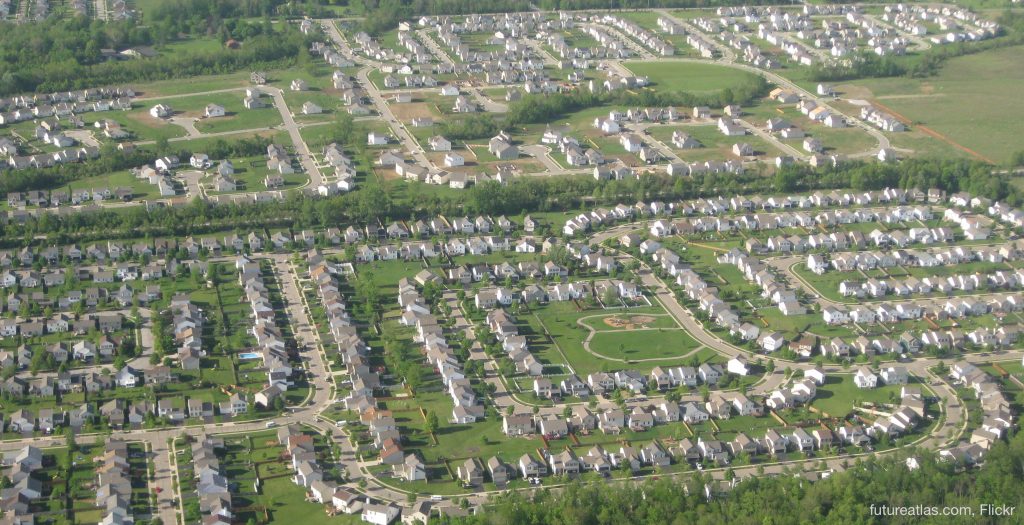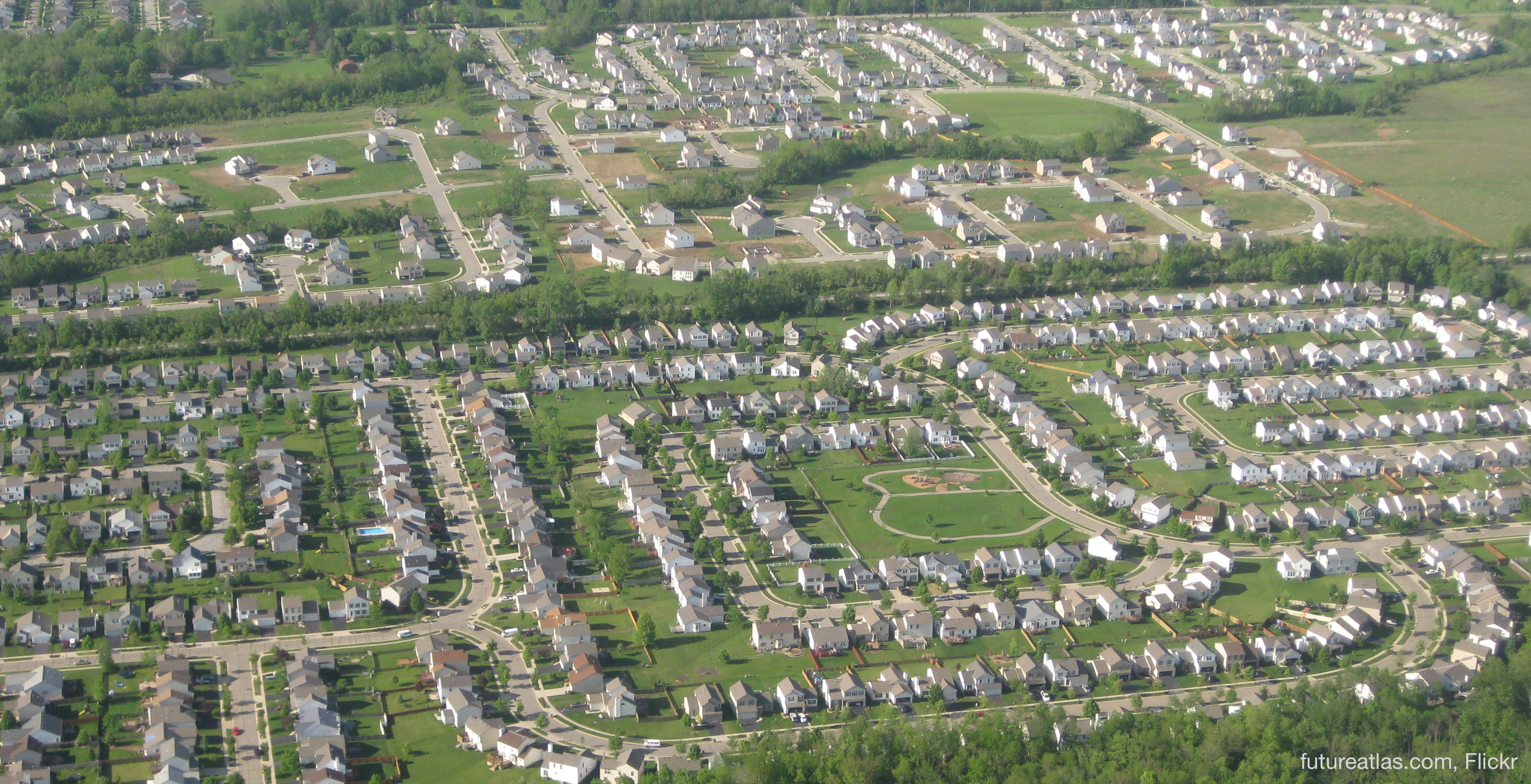
We must address the climate crisis—which requires changing transportation and land use

Good news! Since the time Beth wrote this, we put our money where our mouth is and wrote a Green New Deal for Transportation. You can check it out here.

The transportation sector is the largest source of greenhouse gasses in the United States and it’s also the one that federal officials have the most control over with the power of the purse. Yet the Green New Deal is largely devoid of the bold reimagining of federal transportation spending which encourages more roads, more driving, more sprawl, and more emissions.
Yesterday, Rep. Ocasio-Cortez (D-NY) and Senator Markey (D-MA) introduced the much anticipated Green New Deal resolution. The brains behind the Green New Deal (GND) should be commended for treating the climate crisis as the existential threat it is. As a policy framework, the GND acknowledges the need to use cleaner fuels and invest equitably. But like most conversations around climate change, it gives only a glancing mention to the transportation system and completely ignores the role development patterns play in driving the climate crisis.
Transportation is the single largest source of greenhouse gases (GHG), outpacing the power sector and comprising at least 28 percent of the United States’ total GHG emissions. Surface transportation represents 83 percent of transportation emissions, and transportation has now surpassed electrical generation as the top emitter. Pollution from transportation comes from three drivers: the efficiency of vehicles, the carbon content of fuels, and the distance people travel. And transportation emissions keep climbing in spite of the fact that vehicles are getting more efficient and fuels are getting cleaner because people are driving more and further.
Why is that? Our surface transportation program is designed to keep people in their cars. For example, Congress distributes transportation funding to states based on how much fuel is burned. The more gas burned in a state, the more money that state gets. It should hardly surprise us that states have built systems tailored to driving or that this system has pushed people to drive more over the past 60 years. Moreover, the transportation program dedicates 80 percent of those funds to highways and only 20 percent to transit—and the highway funding is guaranteed over multiple years while transit funds are on the chopping block every year. Further, if you build a new highway, a transportation agency has to come up with a 20 percent local match. But if you want to build new transit, you have to come up with at least 50 percent. Is our priority clear yet?
Back in 2012, Congress gave state departments of transportation more flexibility over how they spent federal transportation funds. In exchange, they created a performance management system to establish some accountability over that spending. That system requires states—most of which are organized around building highways and have very little staff focused on less polluting modes of travel—to set targets for their performance in safety, state of repair, and traffic flow. Strangely, Congress allowed them to set targets in these areas to do worse every year. And even in this embarrassingly weak “accountability” system, efficiency measures and GHG emissions were completely left out.
Considering the GND is a statement by Congress about what we should do to make every sector more efficient and less polluting, it would be nice if they would look at their own spending (i.e. federal dollars) and consider aligning it with their climate priorities.
Underlying these transportation challenges is the fact that our local governments are pushing housing further and further from the jobs and services that people need. And they have been doing this since the beginning of the highway era. It turns out that if houses are spread out and placed far away from all the things people need then they will have no choice but to drive more often and further.
While the development rules that create these patterns were set by the federal government in the 1920s, the federal government likes to pretends it is a purely local issue and that they have no role in the solution. Of course, many federal programs today continue to support and even encourage this spread out development that predictably creates long car trips and traffic congestion.
If the supporters of the GND are serious about addressing GHG emissions, they are going to have to spend time on the sector that is going in the wrong direction—a sector they have more direct responsibility for than any other. Without that, it looks like they are throwing stones from a glass house.



